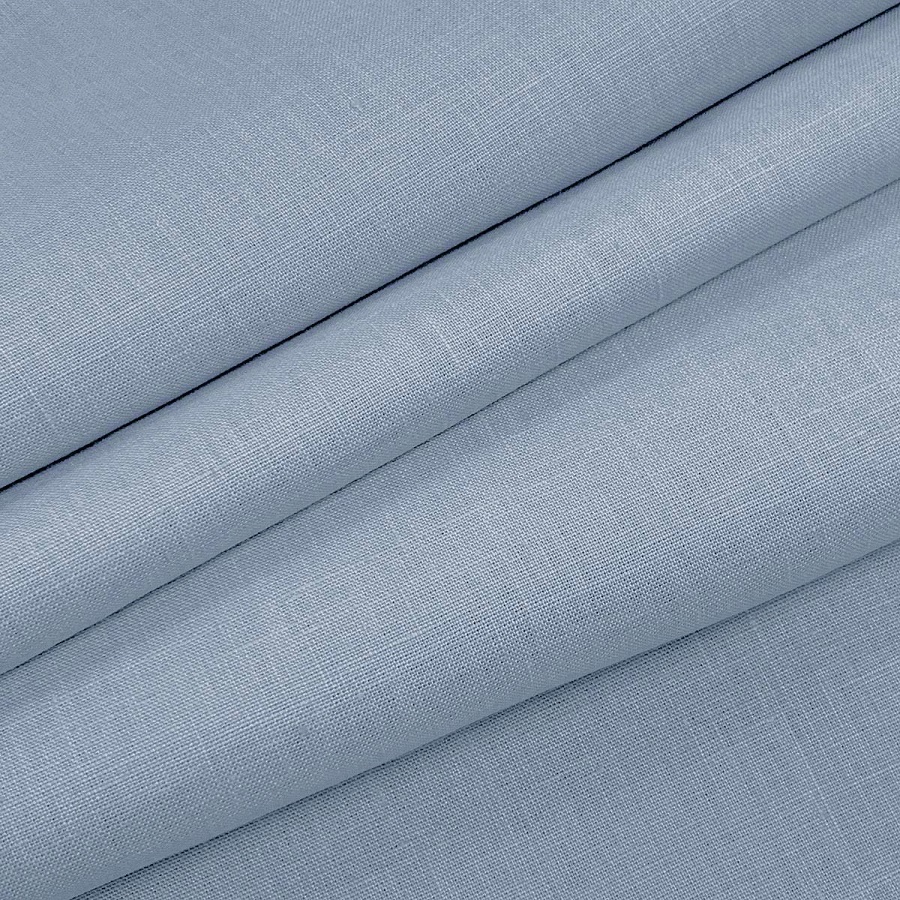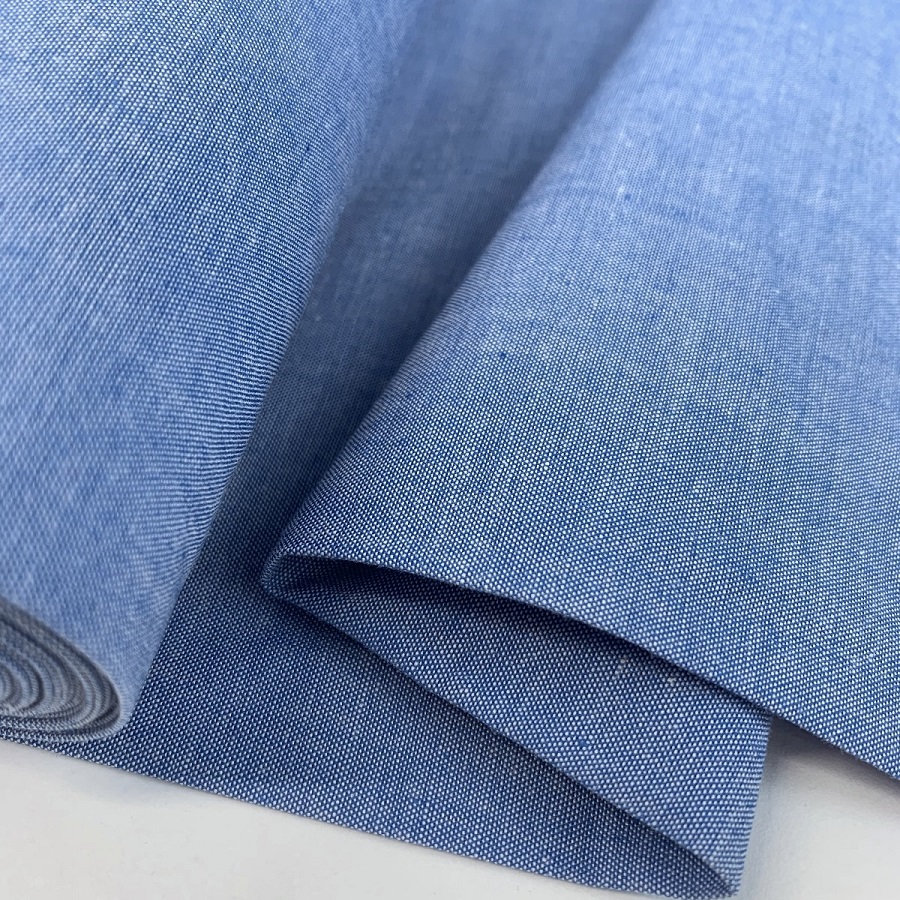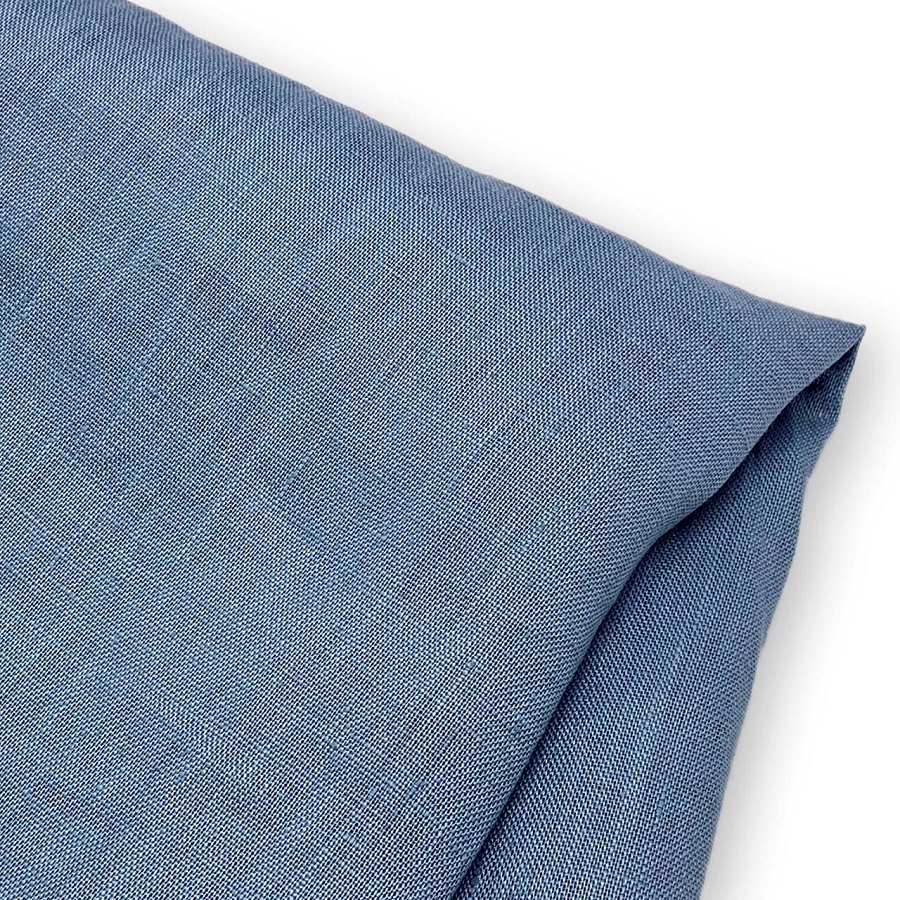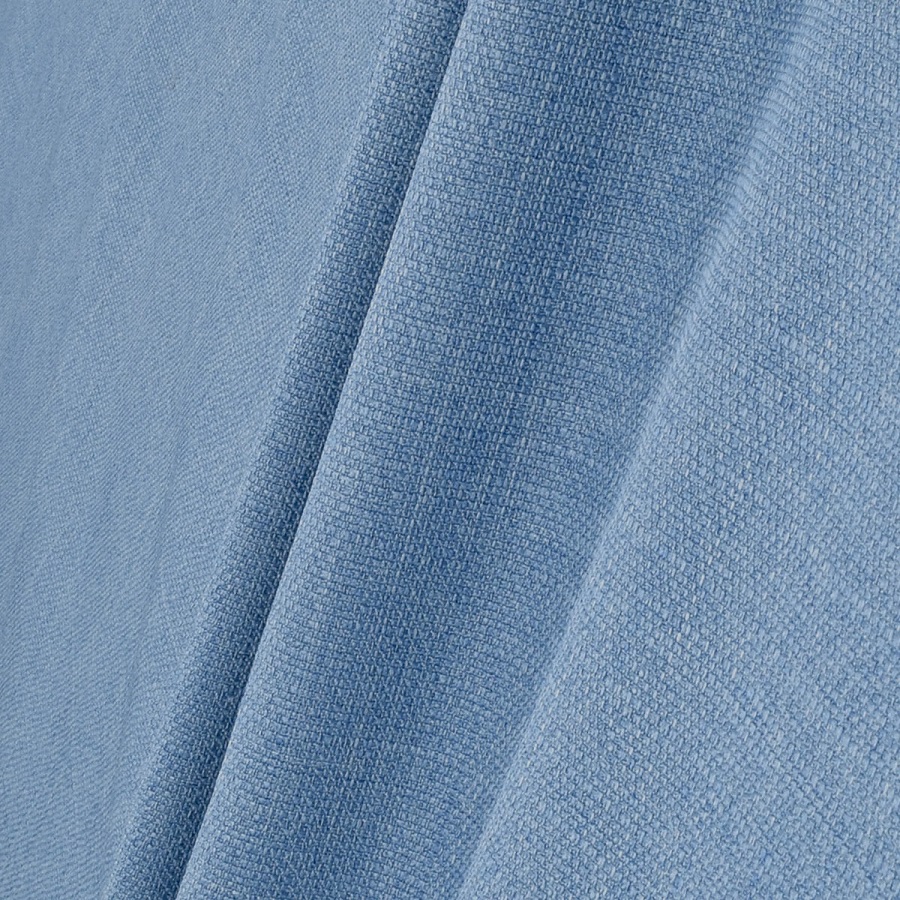An Introduction to Chambray Fabric
Chambray fabric, often confused with its cousin denim, stands out with unique properties. It’s a lightweight, plain-weave fabric, traditionally made from 100% cotton. The blend combines colored yarn in the warp and white in the weft. This combination gives chambray its classic, slightly mottled finish. Unlike heavier denim, chambray boasts a softer texture and thinner construction, making it ideal for warmer climates.
Due to its high thread count, chambray is more textured and breathable. This versatility extends to a variety of colors and patterns, including solid hues and stripes. Chambray’s airy feel makes it perfect for shirts, dresses, and even home decor. It maintains a balance of durability without sacrificing comfort – a go-to fabric for casual and smart-casual attire, as well as creative craft projects.
Now that you have a basic understanding of what is chambray fabric, let’s delve further into its differences from denim in the next section.

Distinguishing Chambray from Denim
Understanding the difference between chambray and denim is essential for any sewing project. While both fabrics feature a blue hue, their construction and texture set them apart. Let’s break down their distinctions.
Fabric Weave and Weight
The first key difference lies in the weave. Chambray’s plain weave creates a lighter, breathable fabric. Denim employs a twill weave, leading to a heavier and thicker result. Think of chambray as a breezy summer shirt and denim as sturdy jeans.
Color and Appearance
Both chambray and denim combine colored yarn in the warp and white in the weft. However, chambray’s even weave gives a consistent look, while denim’s twill weave displays a diagonal ribbing pattern.
Comfort and Suitability
Chambray is favored for its comfort and suitability for warm weather. Its lightweight nature makes it soft and comfortable against the skin. Denim is tougher, suited for cooler climates and outdoor activities.
Uses in Clothing
Chambray often appears in casual and smart-casual clothing. It’s popular for shirts, lightweight dresses, and children’s apparel. In contrast, denim is the go-to fabric for jeans, jackets, and other durable garments.
In summary, when selecting between chambray and denim, consider the project’s requirements. For a lighter, dressier look, choose chambray. For durability and ruggedness, choose denim. Next, we will explore the detailed construction of chambray fabric.
The Weave of Chambray: Understanding the Fabric Construction
Chambray’s distinct look and feel come from its weave. The term ‘plain weave’ refers to the method where each weft thread crosses over and under each warp thread. This simple pattern yields a fabric that’s even and smooth.
Key Characteristics of Plain Weave
- Evenness: The over-under pattern of plain weaving creates a uniform surface.
- Breathability: The weave allows air to flow, making garments cool to wear.
- Durability: Despite being lightweight, the tight weave offers resilience.
- Softness: Chambray is known for a gentle, comfortable feel.
These traits make chambray a favorite for both dressmakers and consumers. While denim is heavier due to the twill weave, chambray offers a lighter alternative that does not compromise on strength.
In crafting chambray, skilled weavers employ precision to maintain the fabric’s consistency. High thread count adds to chambray’s fine texture. What is chambray fabric if not a blend of utility and comfort?
Chambray’s versatility also stems from its construction. Colors other than the classic blue are now common, expanding design options. Moreover, designers value chambray for its textural quality that adds depth to fashion pieces.
In conclusion, understanding the weave of chambray is crucial. It gives insight into why it behaves the way it does in sewing and wear. As you select chambray for projects, consider its weave. It is the foundation of chambray’s desirable properties.

The Versatility of Chambray in Fashion Design
Chambray is a highly versatile fabric in the world of fashion design. Its unique weaving technique and breathable nature make it a popular choice for many different types of garments.
Favored for Casual and Smart-Casual Attire
Designers often favor chambray when crafting casual and smart-casual clothing. Its soft texture pairs well with practical design, resulting in pieces that are both comfortable and stylish. You can find chambray used in everyday shirts, lovely summer dresses, and children’s wear.
A Palette of Textures and Colors
Traditionally, chambray comes in a light blue shade, but today, it’s available in a range of colors and patterns. This diversity allows for bold fashion statements and classic looks alike. From chic solid hues to playful stripes, chambray serves many design aesthetics.
Ideal for Layering Pieces
Its lightweight nature makes chambray a perfect fabric for layering pieces. Think button-up shirts under sweaters, or tunics over leggings. Without adding bulk, it brings dimension and interest to an outfit.
The Designer’s Canvas
What is chambray fabric if not a designer’s canvas? Its textured appearance and high-quality finish allow fashion designers to experiment with different cuts and silhouettes. Whether flowing or structured, chambray adapts to the desired look.
Adaptable to Fashion Trends
Chambray’s timeless appeal means it’s easily adaptable to current fashion trends. From boho-chic to minimalist styles, chambray fits seamlessly into a variety of fashion movements.
In essence, chambray’s versatility in fashion design stems from its combination of practicality, comfort, and aesthetic flexibility. It’s a fabric that designers continuously return to for its ease of use and the effortless elegance it imparts to clothing.
Caring for Chambray: Maintenance Tips
Chambray fabric is not only praised for its comfort and versatility but also for its ease of care. To keep your chambray garments looking their best, consider the following maintenance tips:
- Wash Wisely: Chambray should be washed with care. Use cold water and a gentle cycle to prevent shrinking and fading. Avoid using bleach as it can damage the fibers and alter the color.
- Drying: It’s best to air dry chambray to maintain its shape and texture. If using a dryer, choose a low-heat setting. Remove the garment while still slightly damp to reduce wrinkles.
- Ironing: If your chambray item is wrinkled, iron on a low to medium heat setting. A little steam can help smooth out any stubborn creases.
- Storage: Store chambray clothing by hanging or folding neatly. This prevents long-term creases and keeps the fabric fresh.
By following these care instructions, your chambray fabric will remain soft, comfortable, and durable, ensuring it continues to be a favorite in your wardrobe for years to come.

Exploring the Uses of Chambray Beyond Clothing
Chambray’s adaptability extends beyond wardrobe choices. Its qualities make it suitable for various creative projects.
Home Decor Applications
Chambray brings a casual elegance to home decor. Use it to craft cushion covers or curtains for a light, airy feel in any room. Table linens and placemats in chambray add a touch of understated sophistication to dining spaces.
Craft Projects and Quilting
For crafters, chambray is a joy to work with. With its even weave, it’s ideal for embroidery, adding a textured background that elevates any design. Quilting enthusiasts can mix chambray with other fabrics for unique and breathable quilts.
Accessories and Bag Making
What is chambray fabric if not versatile? Consider making tote bags or purses. Its durability holds up to daily wear while retaining an appealing look.
Kids Toys and Essentials
Soft, durable chambray is excellent for kids’ toys or essentials like baby bibs. Since it washes well, it keeps up with the rigorous demands of children’s items.
In conclusion, chambray is a multifaceted material extending its reach far into the realms of design and craft. Its use beyond clothing highlights its true versatility.
Selecting the Right Chambray for Your Project
When starting a sewing project, choosing the right chambray fabric is crucial. Here are tips to guide you:
Understanding Fabric Types
Know the types of chambray available. Look for 100% cotton for softness or blends for added durability.
Weight Matters
Consider the weight of the fabric. Light chambray suits summer dresses, heavy ones are good for jackets.
Color Choices
Explore color options beyond classic blue. Today, chambray comes in a spectrum of shades.
Feel the Texture
Touch is important. Feel the fabric to ensure it matches the comfort you desire for your piece.
Pattern Play
Decide on solid or patterned chambray based on the project’s look. Patterns can add personality.
Purchasing Tips
Seek reputable stores to buy quality chambray. Check online reviews and fabric descriptions before buying.
By considering these aspects, you can select the perfect chambray for your next creation. Remember, the right choice in fabric can elevate the final outcome of your project.
Where to Buy Quality Chambray Fabrics
When looking for quality chambray fabrics, start with reputable fabric stores. You want a store that values variety and quality. Here are some tips to help you find the finest chambray materials for your projects:
- Research Reputable Retailers: Search for stores known for their wide range of high-quality fabrics. Check customer reviews and ratings to gauge their reputation.
- Feel the Fabric: If possible, visit the store in person. This way, you can touch and feel the fabric to assess its texture and quality.
- Examine the Weave: Look closely at the weave. A tighter weave often means a better-quality chambray.
- Consider Online Stores: Many online fabric retailers offer a great selection of chambray. Look for detailed descriptions and clear pictures to help with your decision.
- Ask for Samples: If shopping online, ask for fabric samples. This little step can ensure you get the fabric that meets your needs.
- Compare Prices: While quality is key, also compare prices. High-quality chambray doesn’t have to break the bank.
By following these guidelines, you can ensure you purchase quality chambray fabric. Remember what is chambray fabric: a blend of style and function, ideal for numerous projects. Make your choice count for a successful sewing outcome.









